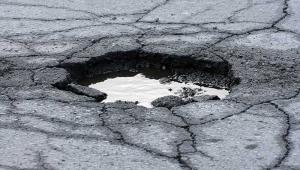According to an IFS report, funded by the Nuffield Trust, early years, primary and secondary school pupils have been the beneficiaries of increased education spending since the 1990s, while those in further education and sixth forms have lost out.
Education spending is the second-largest element of public spending, behind health, and accounts for 4.5% of national income, the report stated.
Spending for the sector has risen substantially in past decades, with the rate of growth increasing from around 1.7% annually in the 1980s and 1990s, to more than 5% per year in real terms over the 2000s.
The largest increases in spending have been seen for primary and secondary school pupils, growing by 114% and 90% respectively between 1997-98 and 2015-16. This is a consequence of successive governments prioritising education spending, with school budgets being protected in real terms since spending cuts took hold in 2010.
However, school spending per pupil is set to fall by 6.5% between 2015-16 and 2019-20, representing the first real-term spending cuts in around 30 years.
The report described 16-18 education as the “big loser from education spending changes in the last quarter of a century.” In 1990-91, per pupil spending in FE was almost 50% more than for secondary schools. By 2015-16, however, it was 10% lower. Spending on FE has been the only major area of education to see cuts since 2010.
This trend is set to continue, with spending per pupil in FE likely to fall by around 13% between 2010-11 and 2019-20, leaving it at roughly the same level in real terms as 1990.
Universities have experienced an uneven pattern of funding, as real-terms falls to available resources offset by large increases in tuition fees in 1998, 2006 and 2012. According to the report, the level of resources available per student starting university in 2015 was £28,000, which is over 50% higher in real terms than in 1990.
For early years education, spending is now £2.3bn per year, up from almost zero in the early nineties. This means the government spends £1,700 per child aged three and four. Between now and 2020, spending on early years education is set to increase by 38% in real terms, as the entitlement to free education for three and four-year olds is expanded from 15 to 30 hours per week for working parents.
Luke Sibieta, report author and an associate director at the IFS said the figures reveal “huge” changes in government’s education spending priorities over the past 30 years.
“There is a strong case for the increased spending on early years education. The rationale for focusing cuts on 16-18 year olds and in further education is much less obvious,” he said.
While noting that “the actions – as opposed to the rhetoric – of both Labour and Conservative governments suggest that they are agreed this is a low priority area for spending”, Sibieta added that it was difficult to draw firm conclusions as to why this was the case.



















